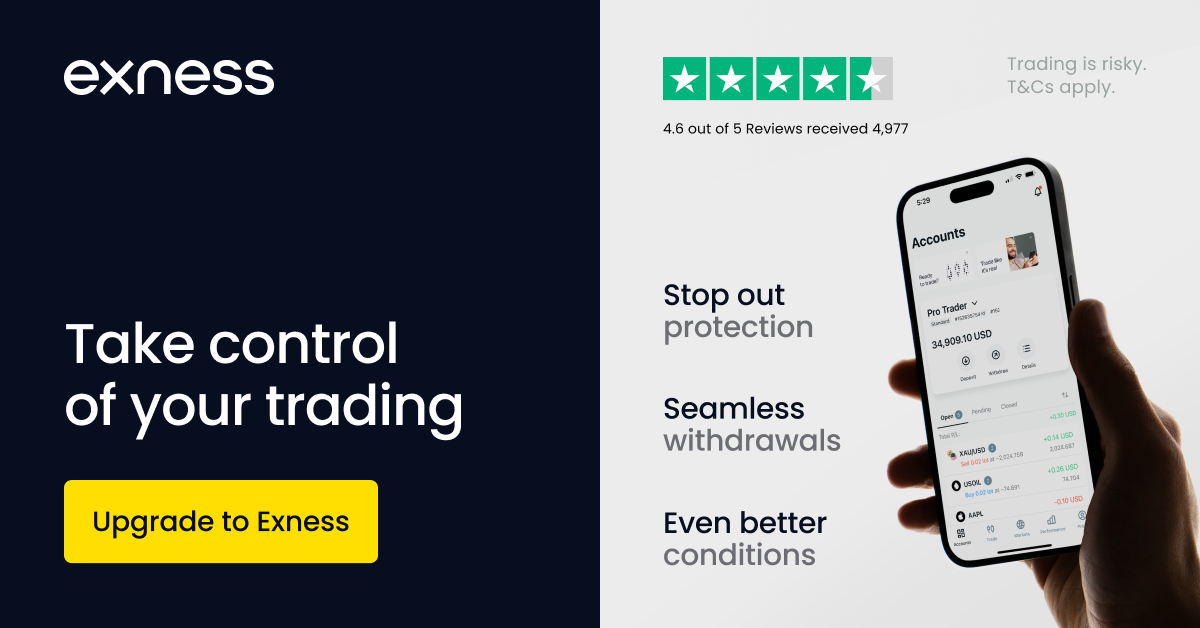
3 minute read
Exness Demo Account vs Real Account: Key Differences You Must Know (2025)
Starting your trading journey with Exness? One of the first questions traders ask is whether to start with a demo account or jump straight into real trading. Understanding the core differences between these two options is crucial for building the right foundation.
In this article, we break down the key differences between Exness demo and real accounts, so you can decide what’s right for you.
👉 Want to try it yourself? Open a free Exness demo or real account here

What Is the Purpose of a Demo vs Real Account?
Learning Environment vs Real Trading Execution
A demo account is designed for practice and education. You trade with virtual funds in real market conditions—no risk involved.
On the other hand, a real account uses actual capital. Every trade involves financial gain or loss, so emotional control becomes critical.
How to get a demo account on EXNESS
Demo accounts let you test strategies and get comfortable with platforms. Real accounts bring the weight of real money and true performance pressure.
Registration and Setup Comparison
Demo Account Sign-Up Process
Setting up an Exness demo account is quick and doesn't require documentation. You simply:
Sign up with an email
Choose “Demo Account”
Set your virtual balance and platform (MT4/MT5)
It takes under a minute to get started.
Real Account Verification and KYC Requirements
For real trading, Exness requires:
Identity verification (passport or ID)
Proof of residence
Phone/email confirmation
This complies with global Know Your Customer (KYC) standards for security.
👉 Learn more and get started: Visit the official Exness site here

Trading Conditions – What Stays the Same?
Market Data, Spreads, and Execution
Both account types use real-time pricing, so spreads, chart behavior, and execution speeds are nearly identical—ideal for realistic practice.
Access to Platforms (MT4, MT5, WebTerminal)
You can use the same tools across both accounts:
MetaTrader 4 (MT4)
MetaTrader 5 (MT5)
Exness WebTerminal
Key Differences Between Exness Demo and Real Accounts
Emotional Impact and Psychological Factors
In a demo account, losses don’t hurt—because the money isn’t real. But in a real account, emotions like fear, greed, and regret come into play, impacting decisions.
Slippage, Spreads, and Real Liquidity
Demo trading doesn’t always reflect slippage or sudden spread changes during high volatility. Real accounts may experience slightly wider spreads in fast-moving markets.
Risk and Reward Dynamics
In a demo account, you can take large risks without consequences. In real trading, poor decisions cost real money—so risk management becomes essential.
See more:
How To verify crypto wallet in EXNESS
How To Open a naira Account on EXNESS

